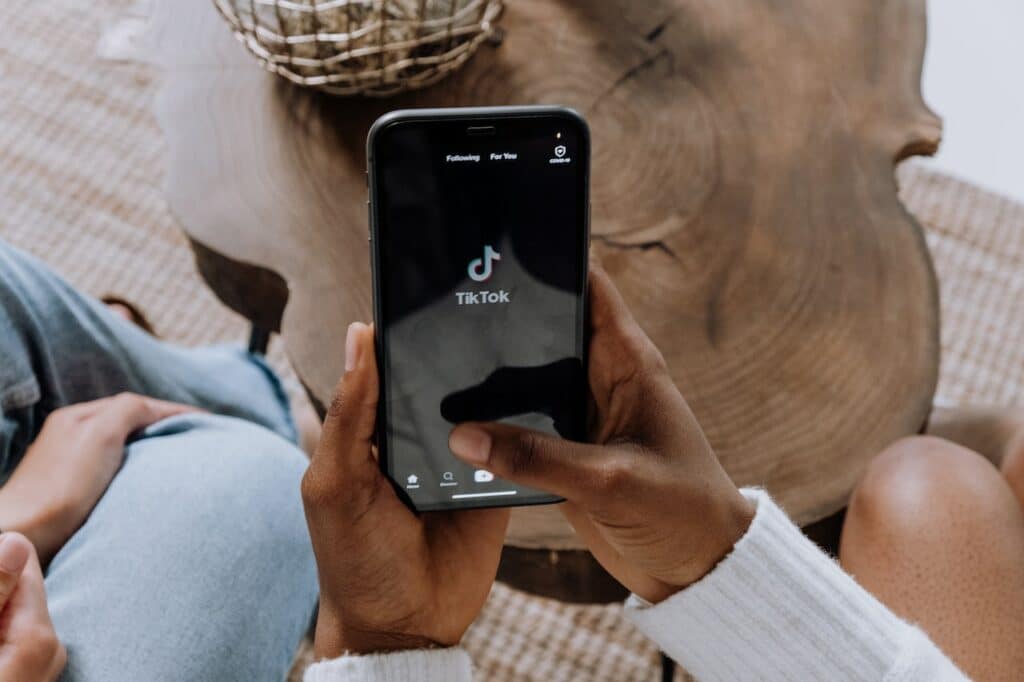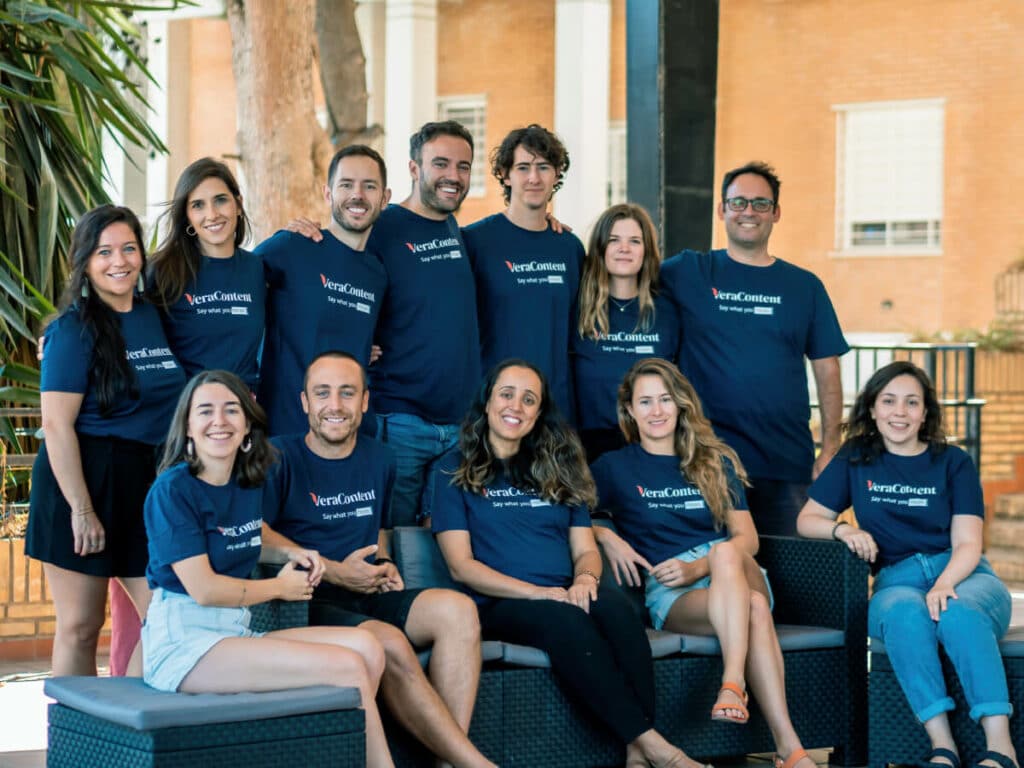With the increasing popularity of TikTok, Instagram Reels and Stories, YouTube Shorts and more, it’s clear that video must form part of your marketing strategy to connect with your audience. And for global brands, that includes incorporating the audiovisual translation of videos into your workflow—as audiences are far more likely to relate to your content in their native language.
Discover how top companies handle the challenges of audiovisual translations and how you can add them to your next campaign.
See also: Marketing translation: Engaging audiences in their own language
What does audiovisual translation involve?

Did you know that video now accounts for 65% of all internet traffic? As we increasingly communicate in a visually driven world, video content plays a fundamental role in how brands connect with audiences.
That’s why marketers are prioritizing their video content. In fact, nearly 81% of companies produce video marketing materials. In one study, around 88% of companies surveyed even had a team dedicated to video content.
Video is now a part of every great content marketing strategy and must be considered if you want to reach global audiences.
“The amount of information contained in one single frame can take 3 pages to describe. The feeling, the colors, the message is seen immediately. It’s a known fact that people engage more when they watch a video and tend to stay watching it. They’re also happy to pass it along. Video informs and entertains people and, good or bad, today most people prefer to watch a video than read a page of text.”
– Lisa Lubin, Emmy Award Winning Video Consultant & Producer at LLmedia
But how exactly are top international brands using video to reach their target markets? The answer lies in top-tier audiovisual translations.
See also: Content marketing translation: A fast way to scale
Audiovisual translation refers to the translation of audio dialogue in a video format into other languages—whether it’s a movie, music video or ad. Most commonly, it comes in these forms:
- Subtitling or “subbing.” Subtitles and captions are the lines of text added to the bottom of the screen in visual media. Subtitles are written texts that simultaneously translate spoken dialogue into different languages for those who can hear but don’t understand the original dialogue. Meanwhile, captions simultaneously transcribe every bit of audio for those who may not be able to hear it. They improve accessibility for users who are Deaf, hard of hearing or have audio processing issues.
For an example of subtitling, see VeraContent’s partnership with IE University to subtitle their “Next Best You” campaign.
- Dubbing, sometimes confused with “voice-overs,” means replacing the original dialogue with a simultaneous, spoken translation. Intralingual dubbing is the translation into various regional dialects or accents (such as Spanish, which is often split into separate dubs for Spain and Latin America.)
- Voice-over is a form of translation where the newly translated video dialogue is overlaid on top of the original dialogue, with the original being slightly or entirely muted. Voice-overs are not ideal for most audiovisual translations, as it can be distracting.
- Transcription is the transformation of the original audio into text. This can be useful for repurposing visual or audio content into articles or posts, such as podcasts, ads, YouTube videos and more. Transcription also provides accessibility for users who use screen-readers, which is software that reads written text out loud for a user.
It’s important to choose the right type of audiovisual translation for the different types of content. For example, while subtitles may be effective for a short social media video, dubbing may be more appropriate for a longer promotional film.
See also: How important is subtitling on social media?
Sony Music Spain: An audiovisual translation breakdown
The Spanish division of Sony Music Entertainment, Sony Music Spain, represents, produces and distributes Spanish music globally. Because Spanish music is crossing linguistic barriers like never before and becoming increasingly popular worldwide, especially in the US, the demand for lyrical translations into English has never been higher.
That’s why Sony Music Spain asked VeraContent to translate popular Argentinian artist Nathy Peluso’s single, Emergencia, into English for the release of PlayStation’s “Horizon Forbidden West” video game.
Translating music is a tricky balancing act. Lyrics are more like poetry than prose, so they contain more creative language, like slang, idioms and sentence fragments. The artist’s creative wordplay and mix of Spanglish and slang made it difficult for previous translations to capture the “feel” of her songs or express her unique personality and lyrical voice.
As the translators, we needed to adapt the lyrics as well as convey the artist’s flow, character and nuance—instead of just providing a flat transliteration. We worked with two linguists who were familiar with the artist and her style and could carefully convey each concept smoothly and naturally.
The outcome? After a turnaround time of three days, we produced an audiovisual translation that allowed the artist to share her vision for her song with English-speaking audiences worldwide. We’re proud to say the English translation of Emergencia retains the same soul and story as the original Spanish version.
“VeraContent is the only translation solution we’ve worked with that could accurately adapt the Spanish lyrics into English while capturing all the nuances and context of the song—and also reflecting the artist’s unique voice, writing style and power.”
– Luis Ángeles, Video Commissioner at Sony Music Spain
The music video for Emergencia was released on YouTube on 18 February 2022 and gained nearly 3.4 million views and 122 thousand likes in its first month. As of February 2023, it has 7.2 million views.
Read our client story on Sony Music Spain for details on how we translated Nathy Peluso’s Emergencia.
What are the challenges of audiovisual translation?
Translating video content is easier said than done. It can quickly get more complicated than other forms of written or oral translation. Here are some reasons why:
- Audio synchronization. Imagine a video with delayed captions—it’s distracting and looks unprofessional. Or the opposite—if a comedy video’s subtitles deliver its punchline before the joke has landed visually, it can ruin the effect.
- Reading speed and space constraints. A subtitle has to serve readers of all ages and reading speeds (kids, adults, non-native speakers, etc.) The optimum subtitle length is around 42 characters long, which can get tricky when translating. Plus, if the caption is too long, it can look awkward on-screen.
- Technological issues. Subtitles are encoded in different ways. Open captions are burned onto the video so they’re not removable. Meanwhile, closed captions are encoded separately and can be edited or removed from the video. Subtitlers have to pay attention to frame rates and subtitle file formats to ensure it all works together.
See also: Why the translation of marketing content is much harder than you think
Above all, the most difficult issue for video marketers is ensuring the content’s original message is retained in the adapted version.
Translation requires more than a literal word-to-word conversion; it must also respect the language’s surrounding culture, idioms, tone and values. Poor translations could lead to the original intent of your message getting lost.
“Does this need to be line by line as similar to the original as possible? Or do we have a bit of liberty to prioritize the final product and make that sound as natural as possible in the target language?”
– Meag Gardner, branded content creator, copywriter and translator
That’s why many companies prefer working with an agency who can handle the complexities of translating audio for their videos. 68% of marketers believe that the biggest benefit of partnering with an agency to create their video content is higher-quality videos.
A professional multimedia translation agency can pool their team of native linguists and tech experts together to ensure every video is subtitled, dubbed or transcribed to the highest accuracy and quality.
See also: Choosing the right transcreation agency for your business
VeraContent’s audiovisual translation process

At VeraContent, our audiovisual translation process relies on our native-level linguists who are experts in their local market’s linguistic nuances and emotion.
“It’s not only the translation of mere words but of a stylistic universe in the form of ‘poetry’ that is synthesized in a text.”
– Luis Ángeles, video commissioner at Sony Music Spain
Usually, this is split into two major steps:
- Our project managers consult the client to understand their goals and challenges. Then, they collaborate with a linguist who will translate the audio into the target language. Sometimes this process requires a second linguist, depending on the project’s complexity. Along the way, we might work with other native experts who can explain idioms or complex phrases in the original text.
- After the first linguist translates the text, we send it to a second linguist who edits it for accuracy, clarity and effectiveness.
“Those two steps are essential, and anything above that is the gravy.”
– Shaheen Samavati, CEO of VeraContent
The key for us lies in understanding both the original creator’s message and intent and the cultural context of the target language.
See also: Multilingual content production: A five-step process
Do you need help with localizing your content marketing? Download our free interactive worksheet for more on how to adapt your content for local audiences:

How to measure the success of audiovisual translations
Measuring the success of your audiovisual translations is essential to understand your ROI.
Here are a few key metrics and considerations to evaluate the quality and impact of audiovisual translations:
- Linguistic accuracy is crucial. Assess whether the translated dialogue accurately conveys the intended meaning, maintaining coherence and naturalness. Subtitles and captions should synchronize well with the audio, providing an enjoyable viewing experience.
- Cultural adaptation plays a significant role. Evaluate if the translation successfully conveys cultural nuances, references, and humor, ensuring the message resonates with the target audience.
- Viewer reception is a valuable indicator of success. Collect feedback from your target audience through surveys or focus groups to gauge their comprehension, engagement, and overall satisfaction with the audiovisual translation.
- Look at the data. Viewing metrics like viewership, retention rates, and social media engagement can provide insights into how your audience perceives the translated audio.
Start creating great video translations
Translation takes more than simply replacing words, especially for audiovisual translations. You must balance creativity and tech-savvy to produce high-quality multimedia content that properly conveys the right message.
At VeraContent, we help our clients ensure their message reaches new audiences by crafting creative, high-quality media translations. To learn more about how we could help with audiovisual translation or localizing your video content, reach out to us today, and we’ll let you know if you qualify for a free content consultation.

